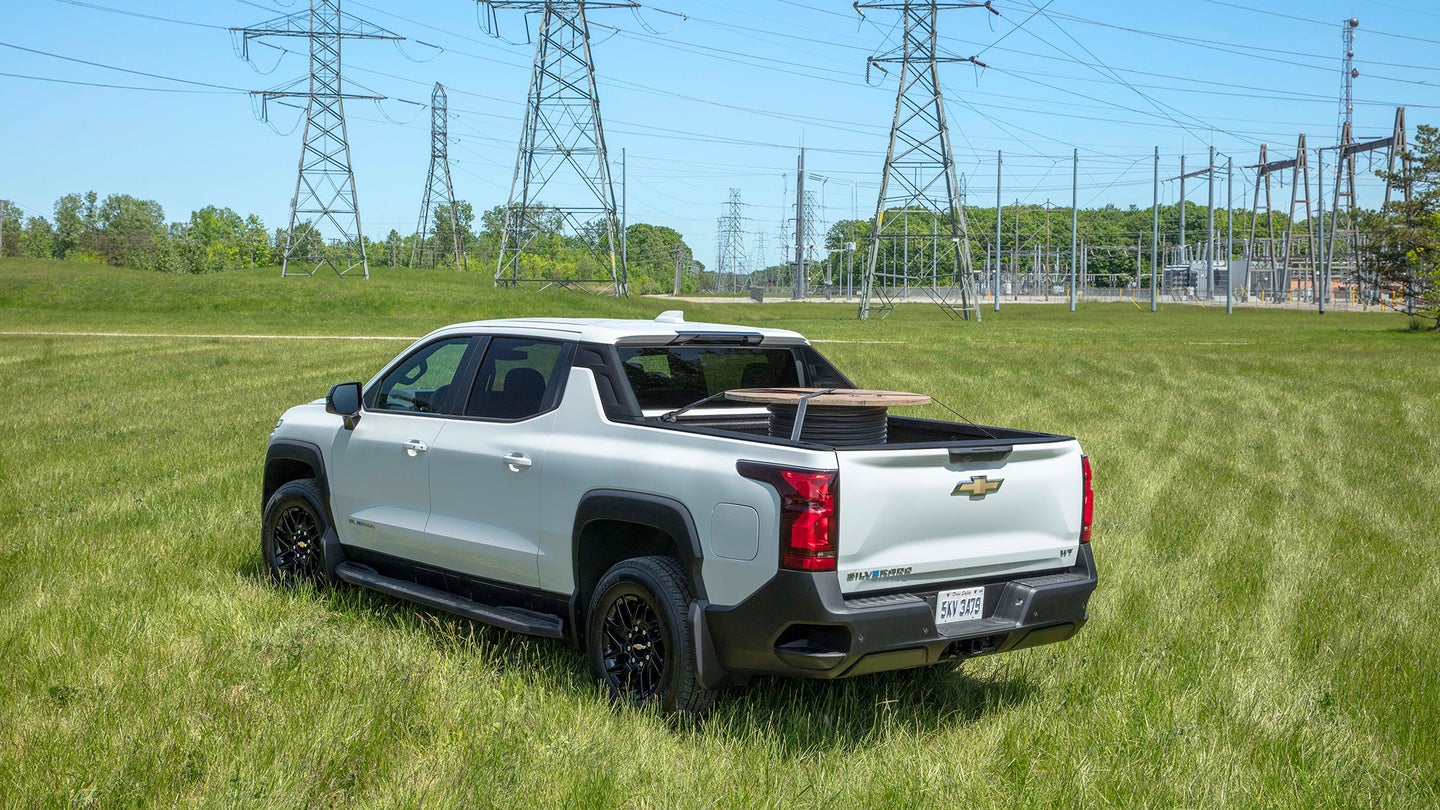
An electric vehicle contains a multitude of battery cells, giving the car’s motors the power they need to turn the wheels. But if the right equipment is involved, that battery system can theoretically do more than just provide juice for the car itself: It can also send energy back to someone’s home during a blackout.
General Motors announced yesterday that it is expanding the number of EVs in its lineup that can do just that. Previously, the only vehicle in its stable that GM said will have that ability is the Silverado EV RST pickup. Now, GM says that other EVs it’s making, like the Chevy Equinox, Chevy Blazer, and the Cadillac Lyriq, will be able to do the same. The automaker notes that this ability is coming to “its retail portfolio of Ultium-based electric vehicles by model year 2026.” Ultium is what the company calls its modern battery platform.
As for the vehicles that GM announced yesterday would be getting the ability to support vehicle-to-home power, Derek Sequeira, director of EV Ecosystem at GM, tells PopSci, “that’s just the first tranche,” adding: “There are things that are behind the curtain that haven’t been talked about yet.”
Not mentioned in yesterday’s announcement are two other GM electric vehicles, the GMC Hummer EV and the Chevy Bolt, the latter of which GM killed but then said would be coming back to life. “We haven’t released timing for either one of those vehicles moving to the vehicle-to-home technology, or the Bolt moving to Ultium technology, but stay tuned, that will come within due time,” Sequeira says.
There is some specific equipment that needs to be in place for all this work. For context, an electric vehicle’s batteries keep their power in DC form. When someone plugs an EV into a level-one or level-two charger, the vehicle is receiving power from the grid in AC form, and internally converting it to DC power for its batteries. Plugging an electric car into a DC fast charger means that step isn’t needed.
So for an electric vehicle to energize your home, the DC power from the car’s batteries needs to become AC again. Some specialized equipment is involved. One is a bidirectional charger that can both send juice to the vehicle as well as receive it; GM calls that piece of gear a PowerShift Charger. The other components involve a bidirectional inverter—to handle the conversion process between DC and AC—as well as what Sequeira describes as a “microgrid interconnection device.”
“It allows the Ultium home ecosystem to isolate from the grid in the event of a power outage, and basically turn your home into a mini-microgrid where your vehicle is supplying the power to your home,” he adds. The kit also involves a “dark start battery, which provides the power to get things going” in a blackout, says Sequiera. He says that the Silverado EV RST could provide as many as 10 to 20 days of power, although that’s with “minimal loads.”
General Motors is not the only automaker getting into the business of powering homes with electric vehicles, which is abbreviated at V2H. Ford’s electric pickup, the F-150 Lightning, can do it too. In fact Robby DeGraff, the product and consumer insights analyst at AutoPacific, notes via email that “Ford has really been the leader I think so far when it comes to V2H capability with the F-150 Lightning.” He also points out that Nissan’s Leaf vehicle has vehicle-to-grid capabilities when paired with Fermata Energy’s technology. And Hyundai’s Ioniq 5 or Ioniq 6 can utilize a special connector to power an appliance-level load.
The enormous electric Cadillac Escalade IQ announced today will support home powering as well, but at around $130,000, it’s a pricey way for anyone to ensure their lights can stay on during a blackout. DeGraff stresses that it’s critically important for GM to make sure the more affordable vehicles in the company’s pipeline get the capability too. “The eventual confirmed replacement for the entry-level Bolt EV and Bolt EUV has to offer this as well,” he says.
The post GM is making more of their EVs into backup power banks appeared first on Popular Science.
Articles may contain affiliate links which enable us to share in the revenue of any purchases made.
from | Popular Science https://ift.tt/NmJCkQg



0 Comments